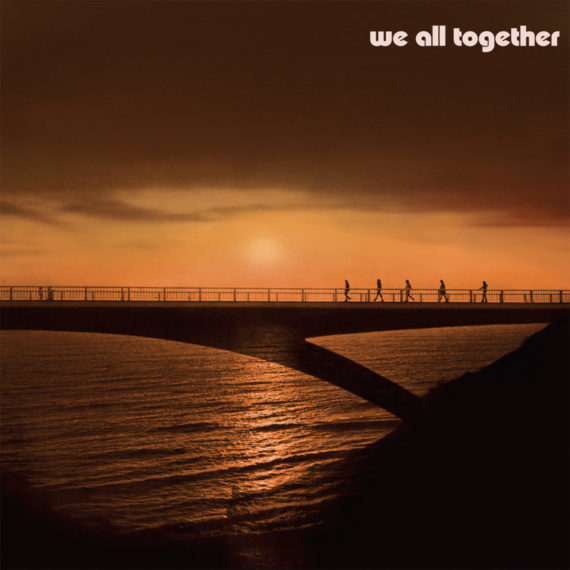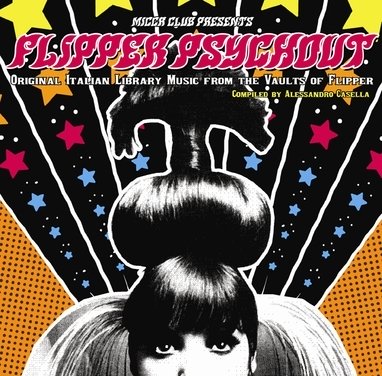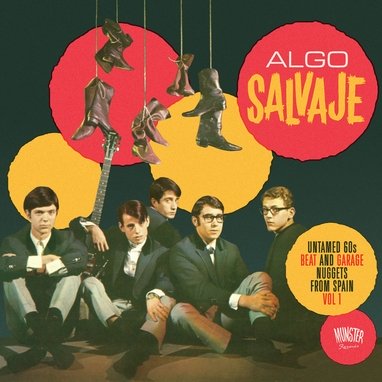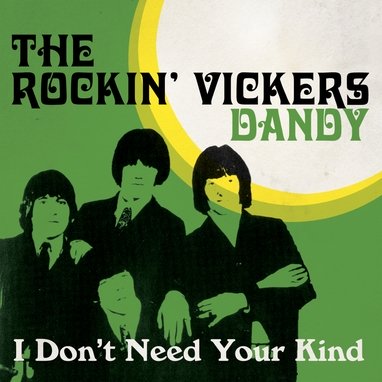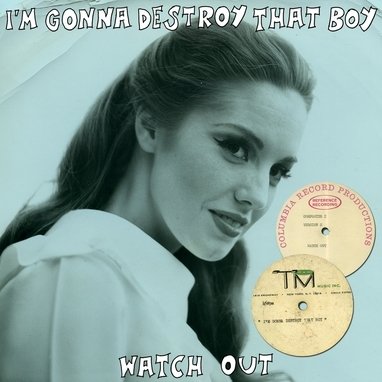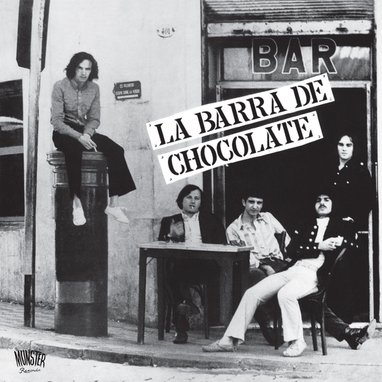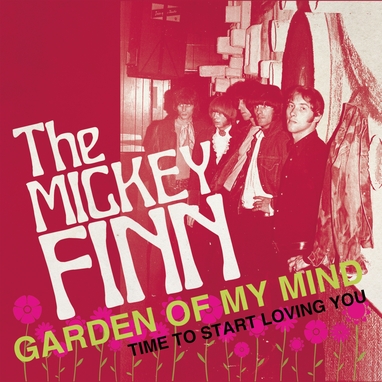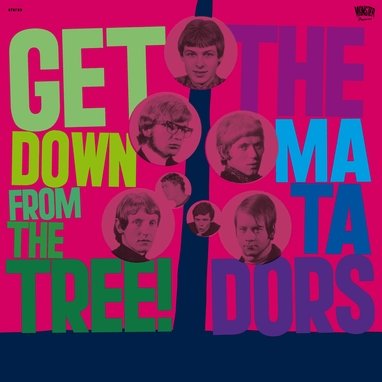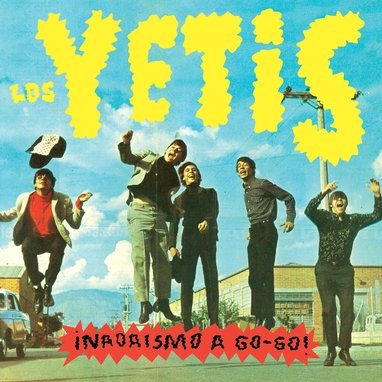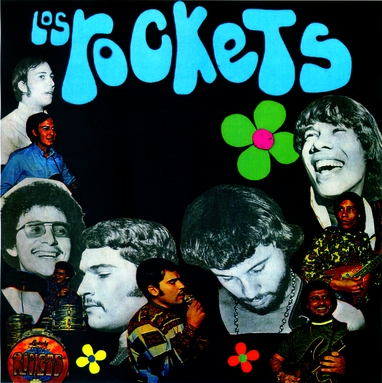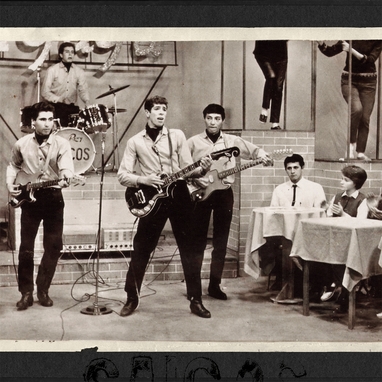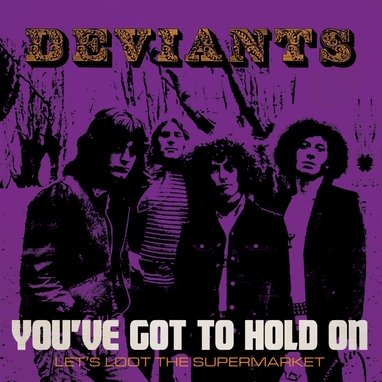WE ALL TOGETHER
II
WE ALL TOGETHER
II
First time vinyl reissue of the second album (originally released in 1973) by one of the epoch-making groups in the history of Peruvian rock: We All Together.
Their original compositions —all sung in English— betray their passion for McCartney, taking Beatle centrism to new heights in South America. While the Uruguayan Los Shakers could remind us of the first phase of the Fab 4, We All Together is like their seventies version.
Amazing compositions, with nods to prog rock and the twilight imprint of singer-songwriters living the end of the hippy dream, that show both diversity and a defined identity. A must for any ‘70s rock collector.
Between 1967 and 1974 Saúl and Manuel Cornejo led a series of epoch-making groups on the MAG label (New Juggler Sound, Laghonia and We All Together) in the history of Peruvian rock. All these bands were directly influenced by the British invasion and used new sounds from Hammond, phase shifters, synthesizers and tapes played backwards, which stimulated rivalry with other groups. Another hallmark of the brothers was the technical quality of their records, thanks to Saul’s supervision of all MAG recordings between 1972 and 1974.
At the end of 1971, when Laghonia was working on the last tracks of “Etcétera”, they met Manuel Antonio Guerrero's (MAG) son, Carlos, who had just got back from the USA, and gladly joined in the choruses of the last songs Laghonia was recording. They met up again soon after to rehearse some of Paul McCartney's songs. As soon as he heard them play, Guerrero Senior urged them to form a group focused on cover versions of foreign hits not yet known in Peru. Initially, the Cornejo brothers weren’t enthused by a project so different from Laghonia, but ended up accepting as it gave them the opportunity to spend time in the studio. Carlos' melodic voice was another incentive, although they made it clear that the new group, We All Together (WAT), would stick to the mixing desk: "The group isn’t into presentations or shows, we’re about recording music and purifying it to the max," stated Saúl at that time. Their first album included four covers of Paul McCartney and Badfinger, several compositions by Carlos Guerrero and two songs from Saúl and Manuel's archives. The result became one of the best-selling Peruvian rock albums.
For their second LP, they decided to continue singing in English but only record their own songs. Carlos composed five tracks which betray his passion for McCartney: 'Little Boy', 'Cloudy Night', 'Ozzy', 'I'd Like Her to Be Mine' and 'It's Us Who Say Goodbye', taking Beatle centrism to new heights in South America.
Saúl and Manuel composed three exceptional songs, written especially for the LP: 'Follow Me If You Can', which is unashamedly indebted to Yes, Cream and George Harrison, with two guitars and inspired Hammond playing; 'Beautiful People', an emotional melody developed from a riff by Manuel; and the tender song 'Persons and Faces'.
Piano dominates the album, thanks to the outstanding keyboard work; string arrangements also abound. Peruvian journalist, Fidel Gutiérrez, highlights that "We All Together made their second LP a space where their main influences came to the surface in their own amazing compositions. To their fascination with the late sounds of the Fab 4, the band added nods to prog rock and the twilight imprint of singer-songwriters living the end of the hippy dream."
Productos relacionados
21,00€
First time vinyl reissue of the second album (originally released in 1973) by one of the epoch-making groups in the history of Peruvian rock: We All Together.
Their original compositions —all sung in English— betray their passion for McCartney, taking Beatle centrism to new heights in South America. While the Uruguayan Los Shakers could remind us of the first phase of the Fab 4, We All Together is like their seventies version.
Amazing compositions, with nods to prog rock and the twilight imprint of singer-songwriters living the end of the hippy dream, that show both diversity and a defined identity. A must for any ‘70s rock collector.
Between 1967 and 1974 Saúl and Manuel Cornejo led a series of epoch-making groups on the MAG label (New Juggler Sound, Laghonia and We All Together) in the history of Peruvian rock. All these bands were directly influenced by the British invasion and used new sounds from Hammond, phase shifters, synthesizers and tapes played backwards, which stimulated rivalry with other groups. Another hallmark of the brothers was the technical quality of their records, thanks to Saul’s supervision of all MAG recordings between 1972 and 1974.
At the end of 1971, when Laghonia was working on the last tracks of “Etcétera”, they met Manuel Antonio Guerrero's (MAG) son, Carlos, who had just got back from the USA, and gladly joined in the choruses of the last songs Laghonia was recording. They met up again soon after to rehearse some of Paul McCartney's songs. As soon as he heard them play, Guerrero Senior urged them to form a group focused on cover versions of foreign hits not yet known in Peru. Initially, the Cornejo brothers weren’t enthused by a project so different from Laghonia, but ended up accepting as it gave them the opportunity to spend time in the studio. Carlos' melodic voice was another incentive, although they made it clear that the new group, We All Together (WAT), would stick to the mixing desk: "The group isn’t into presentations or shows, we’re about recording music and purifying it to the max," stated Saúl at that time. Their first album included four covers of Paul McCartney and Badfinger, several compositions by Carlos Guerrero and two songs from Saúl and Manuel's archives. The result became one of the best-selling Peruvian rock albums.
For their second LP, they decided to continue singing in English but only record their own songs. Carlos composed five tracks which betray his passion for McCartney: 'Little Boy', 'Cloudy Night', 'Ozzy', 'I'd Like Her to Be Mine' and 'It's Us Who Say Goodbye', taking Beatle centrism to new heights in South America.
Saúl and Manuel composed three exceptional songs, written especially for the LP: 'Follow Me If You Can', which is unashamedly indebted to Yes, Cream and George Harrison, with two guitars and inspired Hammond playing; 'Beautiful People', an emotional melody developed from a riff by Manuel; and the tender song 'Persons and Faces'.
Piano dominates the album, thanks to the outstanding keyboard work; string arrangements also abound. Peruvian journalist, Fidel Gutiérrez, highlights that "We All Together made their second LP a space where their main influences came to the surface in their own amazing compositions. To their fascination with the late sounds of the Fab 4, the band added nods to prog rock and the twilight imprint of singer-songwriters living the end of the hippy dream."
Productos relacionados
II
First time vinyl reissue of the second album (originally released in 1973) by one of the epoch-making groups in the history of Peruvian rock: We All Together.
Their original compositions —all sung in English— betray their passion for McCartney, taking Beatle centrism to new heights in South America. While the Uruguayan Los Shakers could remind us of the first phase of the Fab 4, We All Together is like their seventies version.
Amazing compositions, with nods to prog rock and the twilight imprint of singer-songwriters living the end of the hippy dream, that show both diversity and a defined identity. A must for any ‘70s rock collector.
Between 1967 and 1974 Saúl and Manuel Cornejo led a series of epoch-making groups on the MAG label (New Juggler Sound, Laghonia and We All Together) in the history of Peruvian rock. All these bands were directly influenced by the British invasion and used new sounds from Hammond, phase shifters, synthesizers and tapes played backwards, which stimulated rivalry with other groups. Another hallmark of the brothers was the technical quality of their records, thanks to Saul’s supervision of all MAG recordings between 1972 and 1974.
At the end of 1971, when Laghonia was working on the last tracks of “Etcétera”, they met Manuel Antonio Guerrero's (MAG) son, Carlos, who had just got back from the USA, and gladly joined in the choruses of the last songs Laghonia was recording. They met up again soon after to rehearse some of Paul McCartney's songs. As soon as he heard them play, Guerrero Senior urged them to form a group focused on cover versions of foreign hits not yet known in Peru. Initially, the Cornejo brothers weren’t enthused by a project so different from Laghonia, but ended up accepting as it gave them the opportunity to spend time in the studio. Carlos' melodic voice was another incentive, although they made it clear that the new group, We All Together (WAT), would stick to the mixing desk: "The group isn’t into presentations or shows, we’re about recording music and purifying it to the max," stated Saúl at that time. Their first album included four covers of Paul McCartney and Badfinger, several compositions by Carlos Guerrero and two songs from Saúl and Manuel's archives. The result became one of the best-selling Peruvian rock albums.
For their second LP, they decided to continue singing in English but only record their own songs. Carlos composed five tracks which betray his passion for McCartney: 'Little Boy', 'Cloudy Night', 'Ozzy', 'I'd Like Her to Be Mine' and 'It's Us Who Say Goodbye', taking Beatle centrism to new heights in South America.
Saúl and Manuel composed three exceptional songs, written especially for the LP: 'Follow Me If You Can', which is unashamedly indebted to Yes, Cream and George Harrison, with two guitars and inspired Hammond playing; 'Beautiful People', an emotional melody developed from a riff by Manuel; and the tender song 'Persons and Faces'.
Piano dominates the album, thanks to the outstanding keyboard work; string arrangements also abound. Peruvian journalist, Fidel Gutiérrez, highlights that "We All Together made their second LP a space where their main influences came to the surface in their own amazing compositions. To their fascination with the late sounds of the Fab 4, the band added nods to prog rock and the twilight imprint of singer-songwriters living the end of the hippy dream."
WE ALL TOGETHER
II
First time vinyl reissue of the second album (originally released in 1973) by one of the epoch-making groups in the history of Peruvian rock: We All Together.
Their original compositions —all sung in English— betray their passion for McCartney, taking Beatle centrism to new heights in South America. While the Uruguayan Los Shakers could remind us of the first phase of the Fab 4, We All Together is like their seventies version.
Amazing compositions, with nods to prog rock and the twilight imprint of singer-songwriters living the end of the hippy dream, that show both diversity and a defined identity. A must for any ‘70s rock collector.
Between 1967 and 1974 Saúl and Manuel Cornejo led a series of epoch-making groups on the MAG label (New Juggler Sound, Laghonia and We All Together) in the history of Peruvian rock. All these bands were directly influenced by the British invasion and used new sounds from Hammond, phase shifters, synthesizers and tapes played backwards, which stimulated rivalry with other groups. Another hallmark of the brothers was the technical quality of their records, thanks to Saul’s supervision of all MAG recordings between 1972 and 1974.
At the end of 1971, when Laghonia was working on the last tracks of “Etcétera”, they met Manuel Antonio Guerrero's (MAG) son, Carlos, who had just got back from the USA, and gladly joined in the choruses of the last songs Laghonia was recording. They met up again soon after to rehearse some of Paul McCartney's songs. As soon as he heard them play, Guerrero Senior urged them to form a group focused on cover versions of foreign hits not yet known in Peru. Initially, the Cornejo brothers weren’t enthused by a project so different from Laghonia, but ended up accepting as it gave them the opportunity to spend time in the studio. Carlos' melodic voice was another incentive, although they made it clear that the new group, We All Together (WAT), would stick to the mixing desk: "The group isn’t into presentations or shows, we’re about recording music and purifying it to the max," stated Saúl at that time. Their first album included four covers of Paul McCartney and Badfinger, several compositions by Carlos Guerrero and two songs from Saúl and Manuel's archives. The result became one of the best-selling Peruvian rock albums.
For their second LP, they decided to continue singing in English but only record their own songs. Carlos composed five tracks which betray his passion for McCartney: 'Little Boy', 'Cloudy Night', 'Ozzy', 'I'd Like Her to Be Mine' and 'It's Us Who Say Goodbye', taking Beatle centrism to new heights in South America.
Saúl and Manuel composed three exceptional songs, written especially for the LP: 'Follow Me If You Can', which is unashamedly indebted to Yes, Cream and George Harrison, with two guitars and inspired Hammond playing; 'Beautiful People', an emotional melody developed from a riff by Manuel; and the tender song 'Persons and Faces'.
Piano dominates the album, thanks to the outstanding keyboard work; string arrangements also abound. Peruvian journalist, Fidel Gutiérrez, highlights that "We All Together made their second LP a space where their main influences came to the surface in their own amazing compositions. To their fascination with the late sounds of the Fab 4, the band added nods to prog rock and the twilight imprint of singer-songwriters living the end of the hippy dream."

